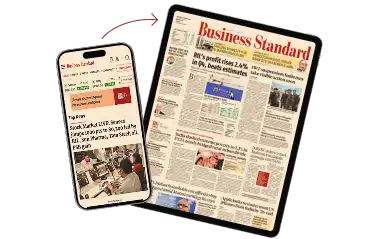MEET ME BY THE FOUNTAIN: An Inside History of the Mall
Author: Alexandra Lange
Publisher: Bloomsbury
Price: $28
Pages: 310
Like people and clouds and cars, malls come in many shapes and colours. But malls have certain bedrock commonalities. A handful of these are physical: Food courts, escalators, kiosks, benches, plants, restrooms, parking. Others are intangible. Malls are an ambiguous blend of public and private space — open to all in theory but inaccessible to many in practice. They are recreational zones, community hubs, surveillance centres, temples to consumerism, places where loitering is encouraged until the mall cops kick you out for loitering too much or in the wrong fashion.
Alexandra Lange’s Meet Me by the Fountain is a well-researched introduction to the rise and fall and dicey future of an American institution. Perhaps the signature American institution; in a 1996 issue of The American Historical Review, Kenneth T. Jackson wrote that “the Egyptians have pyramids, the Chinese have a great wall, the British have immaculate lawns, the Germans have castles, the Dutch have canals, the Italians have grand churches. And Americans have shopping centers.”
Jackson may have been stretching the case to make a (brutal) point, but it’s hard to argue against the mall as a ubiquitous feature of post-war America.
Despite being “a compromised and often architecturally despised form, an ersatz version of a more ancient high street,” malls have much to offer, Ms Lange writes: An air-conditioned respite on hot days, a location where the isolated can get a taste of social life and all-day seating (as long as you abide by mall rules). Might there be a world, she wonders, in which malls might reverse their decline and serve a civic function? Could malls of the future minimise their environmental footprint and peacefully coexist with online shopping?
The father of American malls was Victor Gruen, who studied architecture in his native Austria before fleeing in 1938. Upon landing in New York, Gruen quickly set his sights on retail. When Architectural Forum magazine solicited ideas for the city of Syracuse in 1942, Gruen and the designer Elsie Krummeck suggested a vast shopping center that included a “post office, circulating library, doctors’ and dentists’ offices, and rooms for club activities in addition to the usual shopping facilities.” It was an ambitious vision of enclosed retail, planned from the top down and functioning almost as a miniature town.
That pitch never came to pass but a bigger and better successor came to fruition in 1956, when Gruen’s Southdale complex opened outside of Minneapolis. The center boasted 810,000 square feet of shops, 5,200 parking spaces, Harry Bertoia sculptures, glass mosaic murals, a cylindrical cage containing 50 birds, a fish pond, a cafe and an indoor forest of magnolia and eucalyptus trees.
In the planning stage, Gruen made both aesthetic and economic arguments on behalf of his scheme. Containing a bevy of shops within a single climate-controlled space would offer convenience to shoppers while eliminating the risk faced by store-owners of losing sales to bad weather. It would also deliver to smaller retail establishments the gift of collateral foot traffic.
The relationship was symbiotic, of course. A carbo-loaded customer has more shopping stamina than a hungry one. And if a person who drove to the mall to buy a single item, like a stereo, could be coaxed into grabbing a snack, then why not a lipstick, too? And a pair of earrings, since the store is on the way back to the car, and an iced tea for the road, and and and …
The phrase for this seductive manoeuvre is the “Gruen transfer,” wherein what starts as a single item on a to-do list oozes into an ecstasy of associative spending. Department stores had already recognised and capitalised on this behaviour, with their dense and dizzyingly varied offerings. But Gruen’s shopping centers required even less of a pretext for visiting than a department store. With all of Gruen’s built-in attractions, a person could go to the mall for no reason at all.
Being a multiuse space, malls quickly came to mean different things to different people. They were a workplace to some and a pleasure dome to others. For Joan Didion, writing in Esquire in 1975, malls represented “the perfect fusion of the profit motive and the egalitarian ideal.” They were simultaneously sedatingand stimulating.
Ms Lange is evocative when it comes to the affective elements of mall culture, but her book is occasionally weighed down with cluttering detail. Is it critical to note that the design mark of a Dallas mall was featured, at one point, in dark green on a lighter green background, while later versions experimented with slightly different shades of green? Do we need to know where the current owners of that same mall went to graduate school?
When a non-fiction book bends under the weight of data dumping, I tend to fault the editor rather than the writer. Still, this book is a useful survey, and Ms Lange opens plenty of avenues for readers to wander down, from the curious micro-genre of “mallwave” music to the devious ways in which developers have rendered malls hostile to so-called undesirable customers. The Esquire issue in which Didion’s essay appeared was devoted to “Great American Things,” and included paeans to apple pie, bluejeans, baseball, bourbon and television. The rest of those things are still going strong. Whether malls will abide — whether they should — remains to be seen.
©2022TheNewYorkTimesNewsService










)


